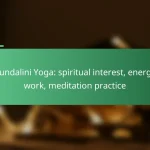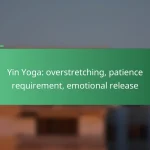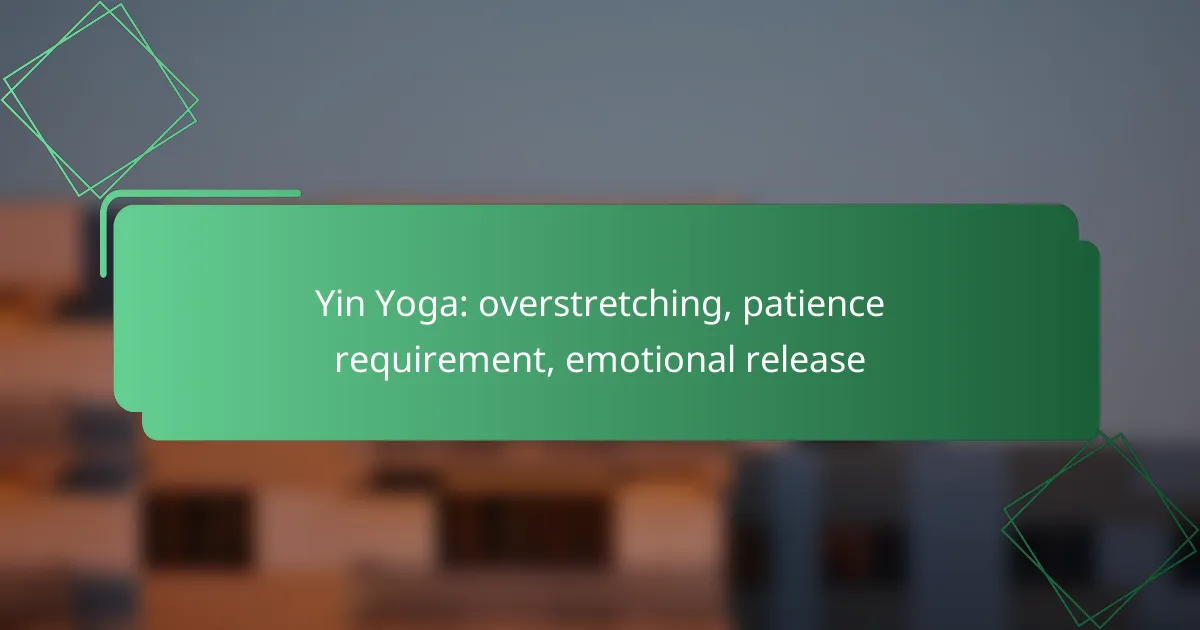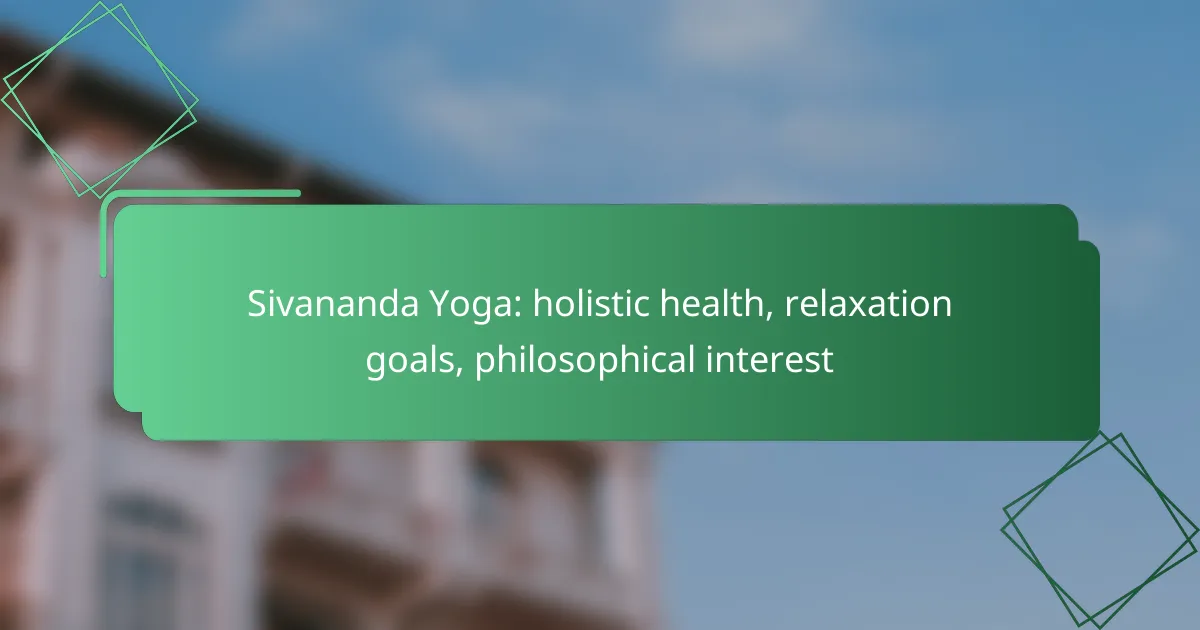Kundalini Yoga serves as a powerful tool for addressing energy imbalances by enhancing the flow of vital energy and aligning the chakras. Through a combination of physical postures, breathwork, and meditation, practitioners can achieve emotional release and restore inner harmony. However, it’s essential to be mindful of spiritual bypass, where individuals may use these practices to evade emotional pain, potentially stunting their personal growth.
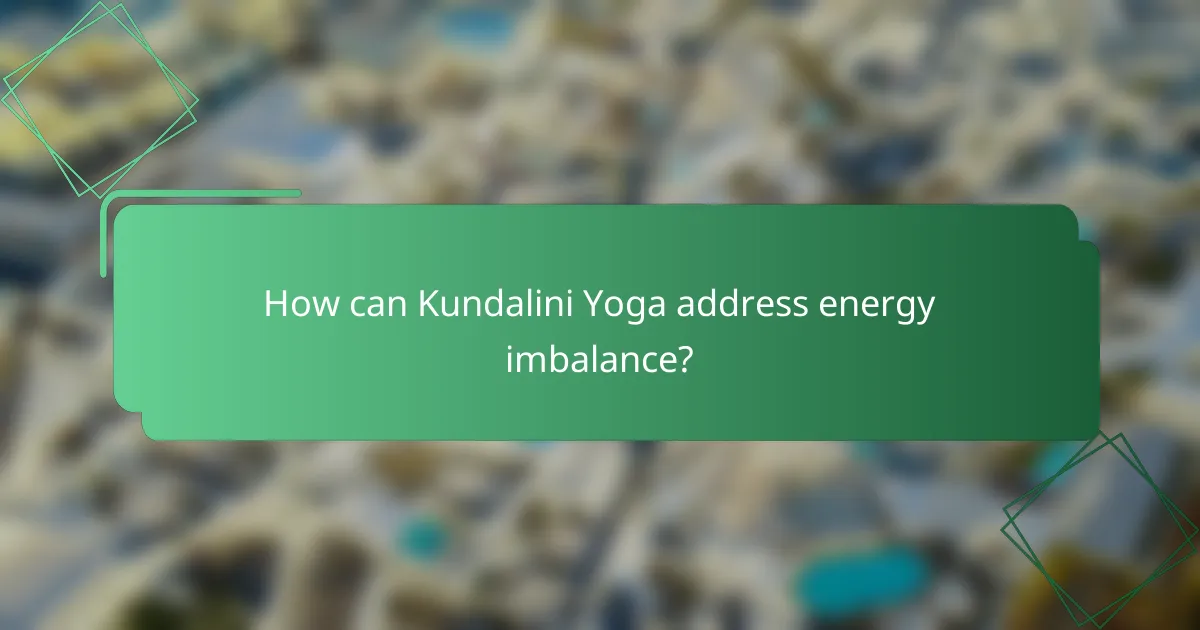
How can Kundalini Yoga address energy imbalance?
Kundalini Yoga can effectively address energy imbalance by promoting the flow of vital energy through the body, aligning chakras, and facilitating emotional release. This practice combines physical postures, breathwork, and meditation to restore harmony and balance within the individual.
Chakra alignment techniques
Chakra alignment techniques focus on balancing the body’s energy centers, which can become blocked due to stress or negative emotions. Techniques such as visualization, sound healing, and specific asanas target each chakra, helping to release stagnant energy and restore flow.
Practicing these techniques regularly can enhance emotional stability and overall well-being. For example, using specific mantras during meditation can resonate with particular chakras, facilitating deeper alignment.
Breathwork practices
Breathwork practices in Kundalini Yoga, such as Pranayama, are essential for regulating energy flow and calming the mind. Techniques like alternate nostril breathing can help balance the nervous system and promote relaxation, which is crucial for addressing energy imbalances.
Incorporating breathwork into your routine can enhance focus and emotional clarity. Aim to practice these techniques for a few minutes daily to experience gradual improvements in energy levels.
Asanas for energy flow
Asanas, or physical postures, play a vital role in facilitating energy flow throughout the body. Specific poses, such as the Cobra or Downward Dog, can stimulate energy centers and promote circulation, helping to alleviate feelings of stagnation.
To maximize benefits, focus on holding each pose for several breaths, allowing energy to build and release. Regular practice can lead to increased vitality and emotional resilience.
Meditation for balance
Meditation is a powerful tool in Kundalini Yoga for achieving emotional balance and energy alignment. Techniques such as mantra meditation or guided visualizations can help quiet the mind and enhance self-awareness, enabling individuals to process emotions more effectively.
Set aside time each day for meditation, starting with just a few minutes and gradually increasing the duration. This practice can significantly improve your emotional state and energy levels over time.
Guided sessions in Los Angeles
In Los Angeles, numerous studios offer guided Kundalini Yoga sessions that cater to various experience levels. Participating in these classes can provide valuable instruction on techniques for energy balance and emotional release.
Look for classes that emphasize personal growth and emotional healing, as these often incorporate the essential elements of Kundalini Yoga. Many studios also offer workshops and retreats that can deepen your practice and understanding of energy dynamics.
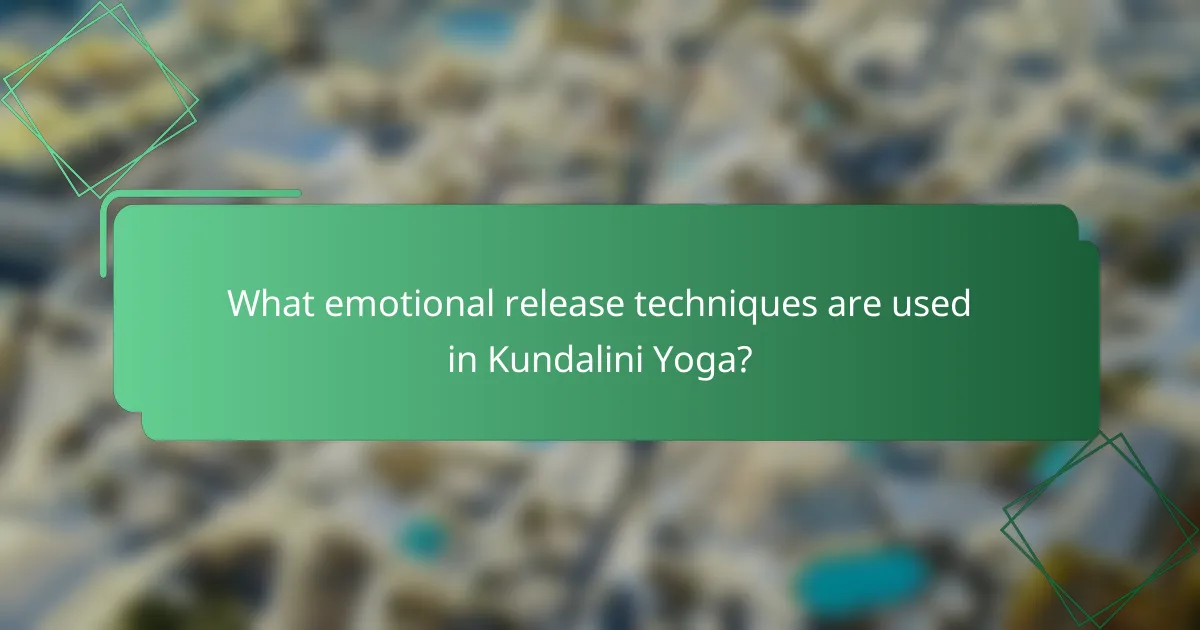
What emotional release techniques are used in Kundalini Yoga?
Kundalini Yoga employs various emotional release techniques to help practitioners process feelings and achieve balance. These methods focus on physical movement, sound, writing, and community interaction to facilitate emotional healing and spiritual growth.
Dynamic movement sequences
Dynamic movement sequences in Kundalini Yoga involve a series of postures and physical exercises designed to stimulate energy flow and release emotional blockages. These sequences often include repetitive motions that can help practitioners connect with their bodies and emotions, promoting a sense of liberation.
To effectively use dynamic movements, focus on your breath and maintain awareness of your feelings during practice. Common sequences may last anywhere from 10 to 30 minutes, allowing ample time for emotional release.
Sound healing with mantras
Sound healing through mantras is a powerful technique in Kundalini Yoga that utilizes vocal vibrations to shift emotional states. Chanting specific mantras can resonate within the body, helping to release pent-up emotions and create a sense of calm.
Practitioners often incorporate mantras during meditation or movement sequences. Aim to chant for at least 5 to 15 minutes, focusing on the sound and its impact on your emotional landscape.
Journaling post-practice
Journaling after a Kundalini Yoga session is an effective way to process emotions that arise during practice. Writing down thoughts and feelings can help clarify experiences and promote deeper understanding of emotional patterns.
Consider setting aside 10 to 20 minutes for journaling after each session. Use prompts like “What emotions surfaced today?” or “How did my body feel during practice?” to guide your reflections.
Group sharing sessions
Group sharing sessions provide a supportive environment for individuals to express their emotions and experiences related to Kundalini Yoga. Sharing in a group can foster connection and validation, making it easier to process feelings collectively.
Participating in these sessions can enhance emotional release, as hearing others’ stories often resonates with personal experiences. Aim to engage in group sharing regularly, whether in a class setting or a community gathering, to strengthen your emotional resilience.
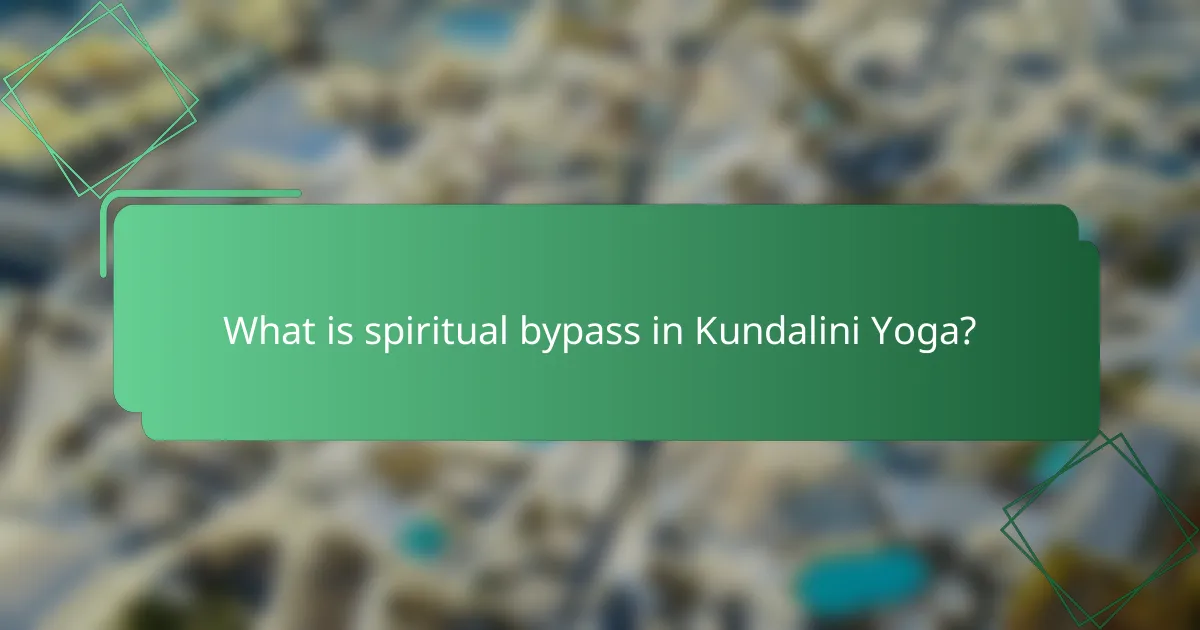
What is spiritual bypass in Kundalini Yoga?
Spiritual bypass in Kundalini Yoga refers to the tendency to use spiritual practices to avoid dealing with emotional pain or unresolved issues. This can lead to an imbalance in energy and hinder genuine personal growth.
Definition of spiritual bypass
Spiritual bypass is a psychological phenomenon where individuals use spiritual beliefs or practices as a way to sidestep emotional challenges. Instead of confronting their feelings, they may focus on spiritual concepts, believing that these will provide a shortcut to healing.
This behavior can manifest in various ways, such as dismissing negative emotions or avoiding necessary personal work. It often leads to a superficial understanding of spirituality, rather than a deep, transformative experience.
Signs of spiritual bypassing
Common signs of spiritual bypassing include an excessive focus on positive thinking, a tendency to ignore or suppress negative emotions, and an avoidance of personal responsibility. Individuals may frequently quote spiritual texts while neglecting their own emotional needs.
Other indicators can be a lack of genuine connection with others, using spirituality to justify unhealthy behaviors, or feeling superior to those who express their emotions. Recognizing these signs is crucial for fostering a more authentic spiritual practice.
Impact on emotional health
Spiritual bypassing can significantly impact emotional health by preventing individuals from processing their feelings. This avoidance can lead to increased anxiety, depression, and feelings of isolation, as unresolved issues linger beneath the surface.
Moreover, relying solely on spiritual practices without addressing emotional wounds can create a false sense of peace. Genuine healing requires a balance between spiritual growth and emotional awareness, ensuring that both aspects are nurtured for overall well-being.
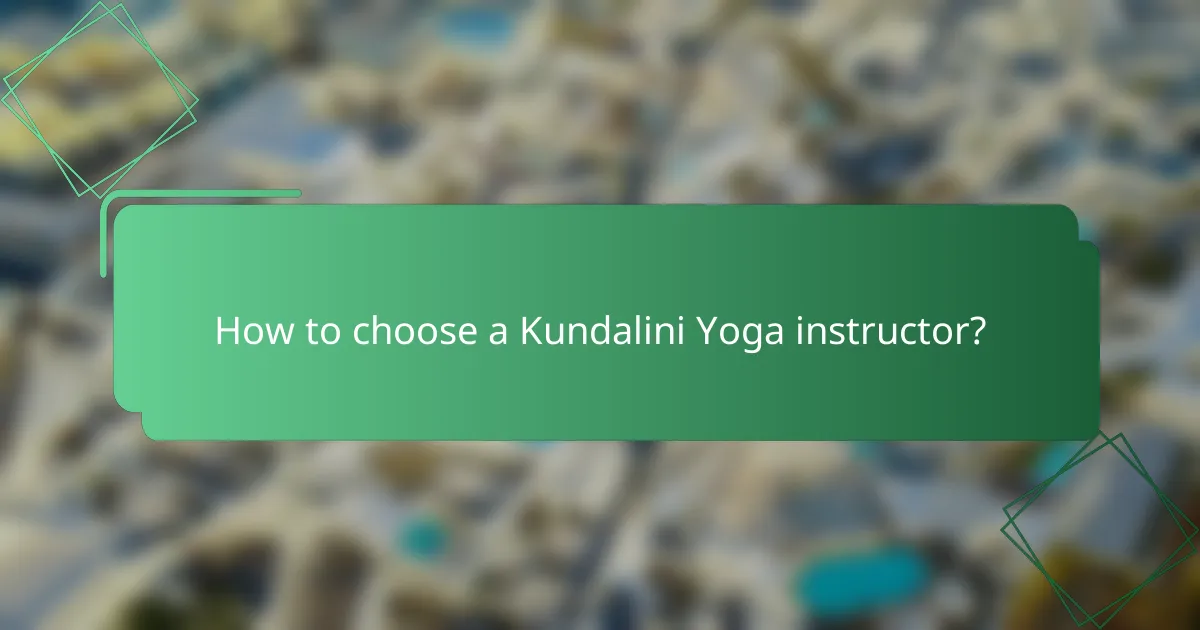
How to choose a Kundalini Yoga instructor?
Choosing a Kundalini Yoga instructor involves assessing their qualifications, experience, and availability in your area. A good instructor should not only be certified but also have a deep understanding of emotional release techniques and local class offerings.
Qualifications and certifications
When selecting a Kundalini Yoga instructor, check for recognized certifications from established organizations, such as the Kundalini Research Institute. Instructors should ideally have completed a minimum of 200 hours of training, focusing on both theory and practical teaching methods.
Additionally, look for instructors who have ongoing education in related fields, such as yoga therapy or psychology. This can enhance their ability to guide students through emotional and spiritual challenges effectively.
Experience with emotional release
It’s crucial to find an instructor experienced in facilitating emotional release during sessions. They should be familiar with techniques that help students process emotions, such as breathwork, meditation, and specific asanas designed to unlock energy blocks.
Ask potential instructors about their approach to emotional release and any personal experiences they may have had. A knowledgeable instructor will provide a safe space for students to explore their feelings and support their journey toward healing.
Local class availability in New York
In New York, there are numerous Kundalini Yoga studios offering classes at various times throughout the week. Look for instructors who teach at well-reviewed studios or community centers, as these often provide a supportive environment.
Consider checking online platforms for class schedules and instructor profiles. Many studios also offer introductory classes or workshops, which can be a great way to assess an instructor’s style and fit before committing to a regular class.
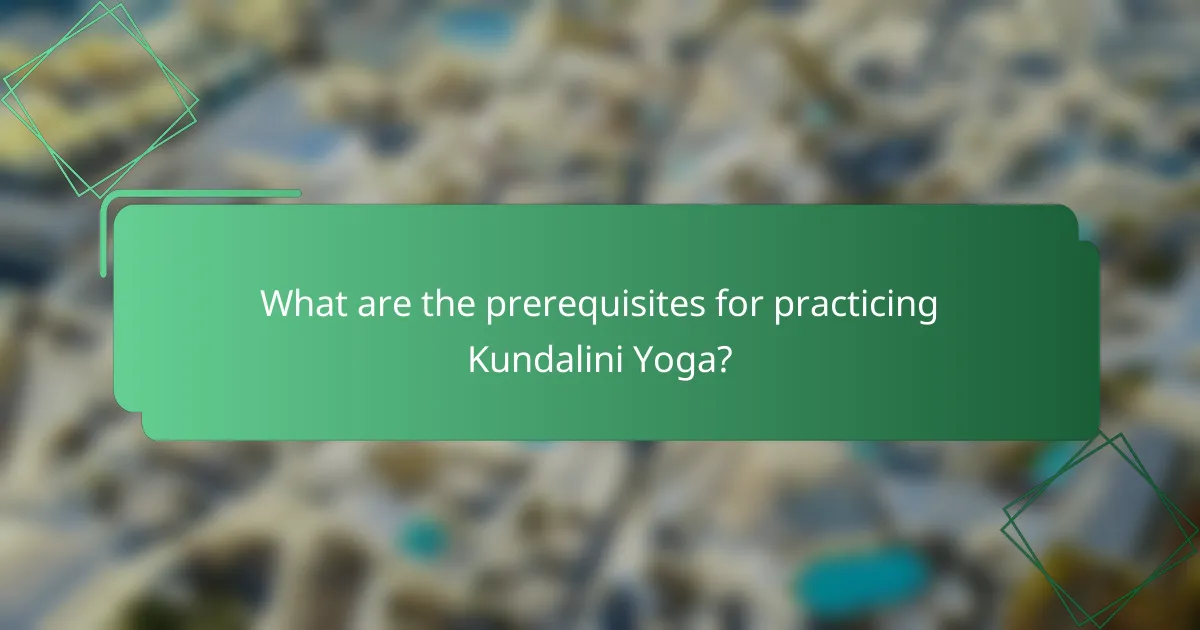
What are the prerequisites for practicing Kundalini Yoga?
Practicing Kundalini Yoga requires a combination of physical readiness, mental preparation, and a solid understanding of yoga philosophy. These prerequisites help ensure that practitioners can safely and effectively engage with the powerful energies involved in this form of yoga.
Physical readiness
Physical readiness for Kundalini Yoga involves being in a condition that allows for the practice of various postures and breathing techniques. It’s beneficial to have a basic level of fitness, as some poses may require flexibility and strength. Beginners should start with simpler exercises and gradually build up to more challenging postures.
Consider consulting with a healthcare professional if you have any pre-existing health conditions or concerns. It’s also wise to listen to your body during practice, taking breaks when needed and avoiding pushing beyond your limits.
Mental preparation
Mental preparation is crucial for engaging with the deep emotional and spiritual aspects of Kundalini Yoga. Practitioners should cultivate a mindset of openness and readiness to explore their inner selves. Techniques such as meditation or mindfulness can help in developing this mental space.
Setting intentions before practice can enhance focus and clarity. Avoid distractions during sessions and create a peaceful environment to facilitate deeper exploration and emotional release.
Understanding of yoga philosophy
A foundational understanding of yoga philosophy enriches the Kundalini Yoga experience. Familiarity with concepts such as chakras, energy flow, and the purpose of Kundalini can provide context for the practices. This knowledge helps practitioners appreciate the significance of their experiences during sessions.
Reading texts on yoga philosophy or attending introductory classes can be beneficial. Engaging with a community or teacher can also provide insights and support as you navigate the complexities of this spiritual journey.

How does Kundalini Yoga compare to other yoga styles?
Kundalini Yoga focuses on awakening the energy at the base of the spine, distinguishing it from other styles that may prioritize physical postures or meditation. This practice combines dynamic movements, breath control, and chanting to facilitate emotional release and spiritual growth.
Energy Imbalance
Kundalini Yoga addresses energy imbalances by using specific techniques to activate and balance the chakras. Practitioners often experience shifts in energy flow, which can lead to heightened awareness and emotional clarity. Regular practice can help individuals identify and correct these imbalances, promoting overall well-being.
Emotional Release
This style of yoga encourages emotional release through its combination of movement, breathwork, and sound. Techniques such as chanting and meditation can help practitioners confront and process suppressed emotions. This release can lead to a sense of liberation and emotional healing, making it a powerful tool for self-discovery.
Spiritual Bypass
Kundalini Yoga can sometimes lead to spiritual bypass, where individuals use spiritual practices to avoid dealing with emotional issues. It’s essential to approach this practice with awareness, ensuring that spiritual growth does not come at the expense of addressing underlying psychological challenges. Balancing spiritual exploration with emotional honesty is crucial for genuine progress.

